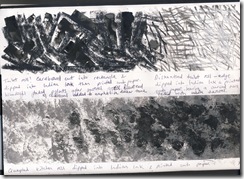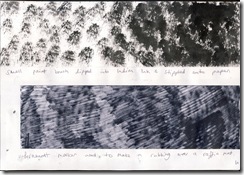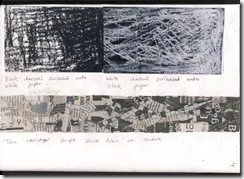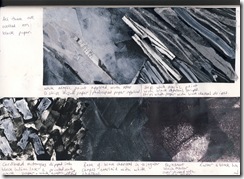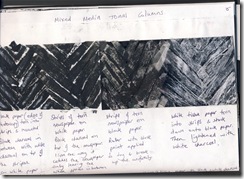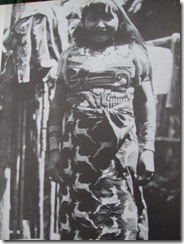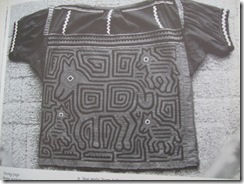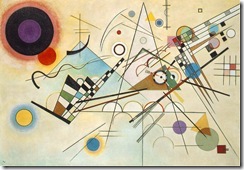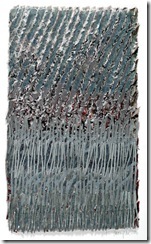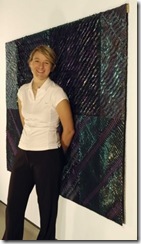I made a series of 10 tonal columns plus 3 mixed media columns using an assortment of media all in black and white and ranging from Indian Ink, permanent marker, charcoal, torn and cut papers, white acrylic paint etc.
I’ve rolled, scribbled, torn/ cut and stuck with newspaper and photocopies, printed, stippled, made a rubbing.
1.
2.
3.
4.
5.
I’m really pleased with the effect of the roller and black ink [1] which left a beautiful soft effect which I feel was probably due to the absorbency of the cartridge paper [I remember the effects I noted in the first module when printing on different types of papers]. I also love the fading after several applications.
I’ve also been surprised by the effects of the charcoal [2, 4,] -both black and white -and the stark contrasts they give either when used alone or in addition to other media to deepen/lighten a tone.
Cutting / tearing papers [ 2, 4 & 5]or printing with card [2] has always intrigued me as results are unpredictable. I especially like the cut pieces of photocopied old manuscript and embroidered bag which seem intensified as a result of the technique.
Mixed media tonal tonal columns
I’ve made 3 of these and had enormous fun as the techniques seemed to flow into each other.
1 & 2
3.
I really loved the way the white acrylic paint applied with the roller created beautiful ripples [1], a very different result from the ink used previously. I had a lot of fun applying the white tissue paper and then applying black charcoal over it [1]– it seemed to split and divide – I can really see potential for animal markings in this.
I tried to work a bit more uniformly on [2] by making triangular markings and then breaking them down by adding a different medium on the top.
I’m very pleased with these especially the effect of white charcoal over the black in the centre of this column.
Again charcoal has been a joy to work with on 3 and I’ve applied it to all the sections here. I was fascinated with the second from the left - as I rubbed the charcoal over the strips of newspaper it didn’t reach the base paper underneath which resulted in a fabulous contrast. I also love the effect of the white charcoal over the torn white tissue paper – grainy and delicate.

